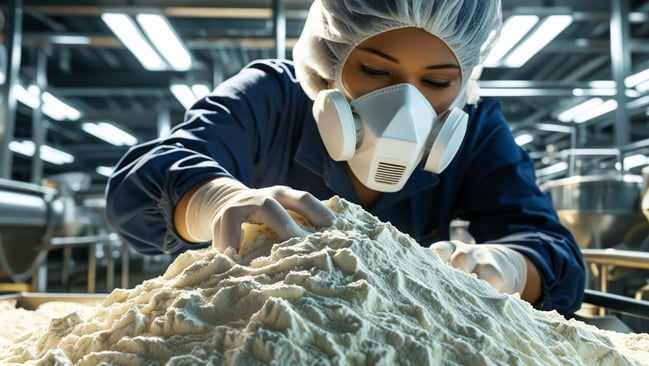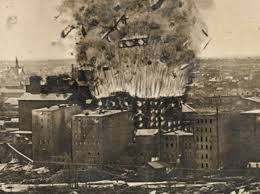Many food manufacturers rely on flour, yet the associated health risks are frequently overlooked. Whether used in large-scale production or smaller bakeries, flour handling presents significant challenges not only to product quality but also to workplace health and safety.
Flour dust is a common by-product in processing environments, and without robust controls, it can quickly become a hazard for both employees and facilities. From airborne respiratory threats to the risk of dust explosions, neglecting proper procedures can have serious consequences.
Respiratory and related health risks

Prolonged exposure to flour dust can cause a range of health problems, particularly for workers in bakeries and food processing plants. Inhaling flour dust can irritate the respiratory system, leading to coughing, wheezing, and shortness of breath. Some individuals may develop allergic reactions, such as baker's asthma.
Additionally, direct contact with flour can cause skin irritation and dermatitis. Employers have a responsibility to protect their employees from these hazards by implementing proper dust control measures and providing appropriate personal protective equipment (PPE).
For more in depth information please see the below links to HSE's website on flour -
 Flour (Bakers and millers) - COSHH
Flour (Bakers and millers) - COSHH
 COSHH and bakers - key messages - COSHH
COSHH and bakers - key messages - COSHH
You can also request COSHH data sheets from your flour supplier.
If you are using a Temp agency for staff, ensure they have a Gangmasters licence.
Ignition & Explosion Risks

(Above. The Great Mill Disaster, also known as the Washburn A Mill explosion, May 2, 1878, in Minneapolis, Minnesota, United States)
Flour, sugar, and other carbohydrate-based powders are highly combustible, which makes them effective fuels. The greatest danger arises when fine dust particles become airborne in a confined area. Smaller flour particles have a large surface area in relation to their mass, so they ignite much faster than larger grains. When suspended in air, all that is needed is a small source of heat—a spark or friction from equipment—to cause ignition. If enough dust is present, this can lead to a rapid chain reaction and potentially a serious explosion.
Employers are required to protect staff from these hazards by:
* Keeping dust concentrations below explosive limits (through cleaning and effective ventilation)
* Eliminating ignition sources (using spark-proof tools and monitoring for hot spots)
* Installing dust extraction equipment and explosion relief vents where appropriate
Ignition precautions - Cleaning procedures
Standard vacuums should never be used to clean up flour, or similar powders, as the friction generated inside the equipment can trigger an explosion. For safe handling of excess powders, invest in ATEX-certified vacuums, which are specifically designed to prevent explosions when used with materials like flour. Though these machines require a greater initial outlay, their safety benefits far outweigh the cost.
Ignition precautions - Fire Extinguishers
CO2 extinguishers are unsuitable for use on powders like flour, as the pressurised gas disperses the particles, increasing the risk of ignition by raising the fuel-to-oxygen ratio. When operating electrical equipment for powder handling (such as volumetric filling systems), carefully select extinguishers that are both safe for electrical fires and appropriate for combustible powders, since water cannot be used on electrical equipment. Choosing the correct extinguisher is a critical safety consideration.
Summary
Storing flour safely in production areas is not merely a matter of compliance and preventing contamination; it's a fundamental responsibility to protect your employees, your business too.
By understanding the inherent risks of flour dust explosions & inhalation, and by implementing effective storage and handling practices, you can create a safer, healthier, and more productive working environment. Don't underestimate the power of prevention – Ultimately, a proactive and informed approach to safety will protect your staff, maintain compliance, and uphold the reputation of your business.